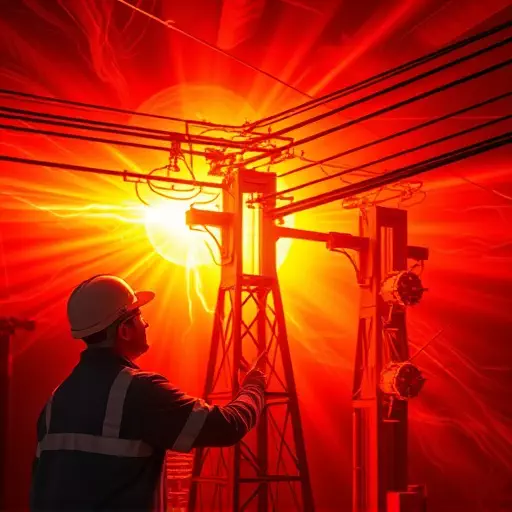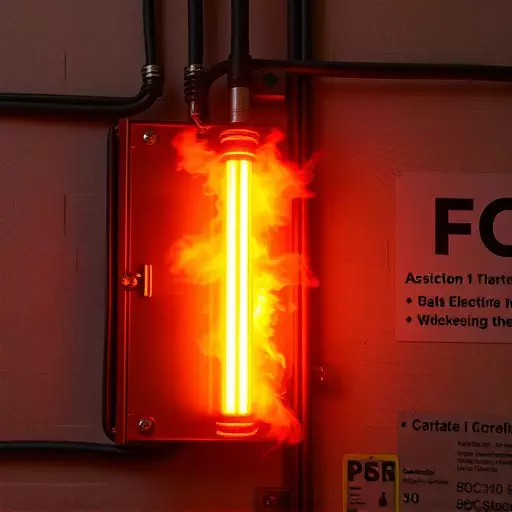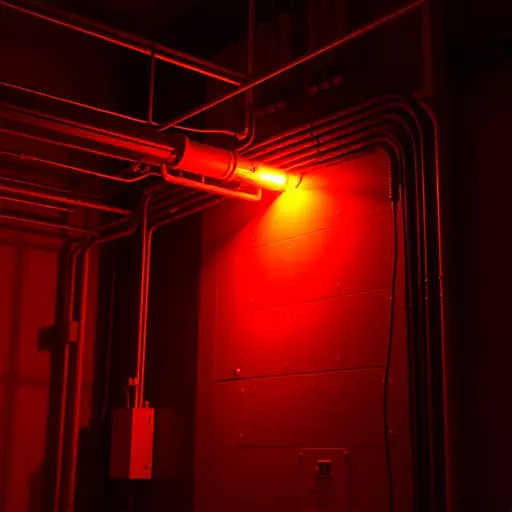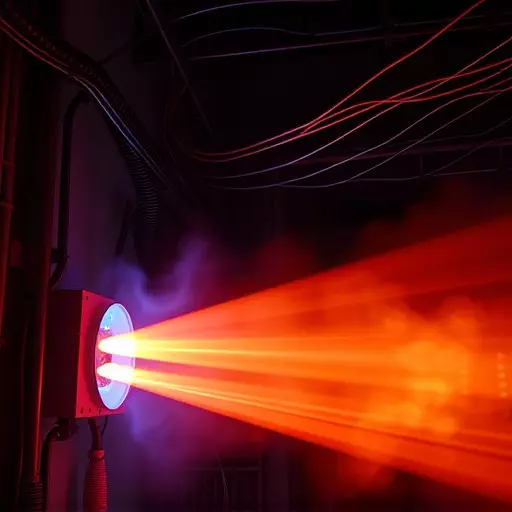“In high-voltage systems, arc flashes pose a significant electrical hazard, requiring meticulous understanding and management. This comprehensive guide delves into the critical aspects of arc flash safety, starting with defining and exploring causes of these explosive events. We emphasize the importance of electrical hazard analysis in identifying risks and outline key components for an effective arc flash study process.
Additionally, we explore international standards, risk mitigation strategies, and best practices for continuous monitoring to ensure compliance and worker protection.”
- Understanding Arc Flash: Definition and Causes
- The Importance of Electrical Hazard Analysis
- Key Components of an Effective Arc Flash Study Process
- International Arc Flash Safety Standards and Regulations
- Strategies for Mitigating Risks After the Arc Flash Study
- Best Practices for Continuous Arc Flash Safety Monitoring
Understanding Arc Flash: Definition and Causes

The Importance of Electrical Hazard Analysis

Electrical Hazard Analysis is a critical step in ensuring arc flash safety within high-voltage systems. It involves a comprehensive study process that identifies potential risks and hazards associated with electrical equipment, particularly during abnormal conditions like arcing. By meticulously assessing each component’s role and behavior under various scenarios, professionals can pinpoint areas requiring enhanced protection measures. This data-driven approach is pivotal in aligning installations with prevailing arc flash safety standards, thereby mitigating the risk of severe injuries or fatalities.
This analysis goes beyond mere identification to include quantifying the energy released during an arc flash event, which aids in selecting appropriate personal protective equipment (PPE) and engineering controls. Moreover, it considers human factors, ensuring that workplace procedures are designed to minimize proximity to hazardous areas. The outcome is a robust framework for managing electrical hazards, making arc flash safety not just a compliance issue but a proactive measure to protect workers and critical infrastructure.
Key Components of an Effective Arc Flash Study Process

An effective arc flash study process is a multifaceted approach designed to mitigate electrical hazards in high-voltage systems. It begins with a thorough electrical hazard analysis, which involves identifying potential sources of arcing, assessing their likelihood and consequences, and understanding the unique characteristics of the equipment involved. This step sets the foundation for developing tailored safety strategies that align with established arc flash safety standards.
The study process then delves into detailed calculations to determine incident energy levels and clearance distances required for worker protection. This data guides the selection of appropriate personal protective equipment (PPE) and system design modifications, ensuring a comprehensive approach to arc flash safety.
International Arc Flash Safety Standards and Regulations

International Arc Flash Safety Standards and Regulations play a pivotal role in safeguarding workers and facilities from electrical hazards associated with arc flashes. These standards, developed by organizations like IEC (International Electrotechnical Commission) and NFPA (National Fire Protection Association), provide guidelines for risk assessment, mitigation strategies, and protective measures.
An essential component of arc flash safety is the arc flash study process, which involves a thorough electrical hazard analysis. This methodically evaluates potential arc flash risks by examining equipment design, operating conditions, and human factors. By adhering to these international standards, facilities can implement appropriate control measures, such as proper personal protective equipment (PPE), system design modifications, and effective training programs, thereby enhancing arc flash safety throughout their high-voltage systems.
Strategies for Mitigating Risks After the Arc Flash Study

Best Practices for Continuous Arc Flash Safety Monitoring

Maintaining continuous arc flash safety monitoring is paramount in high-voltage systems to prevent catastrophic failures and protect personnel. A systematic approach, starting with a thorough arc flash study process, is essential. This involves assessing every electrical circuit, identifying potential hazards, and calculating incident energies to determine appropriate protective measures. Integrating these findings into an electrical hazard analysis allows for the implementation of safety standards like NFPA 70E or IEEE 1584.
Regular reviews and updates of the arc flash study are crucial due to equipment changes or modifications in operational procedures. Utilizing specialized software tools can enhance this process by providing accurate calculations, visual representations, and comprehensive reports. This proactive arc flash safety monitoring ensures compliance with industry standards and fosters a culture of safety within the organization.


